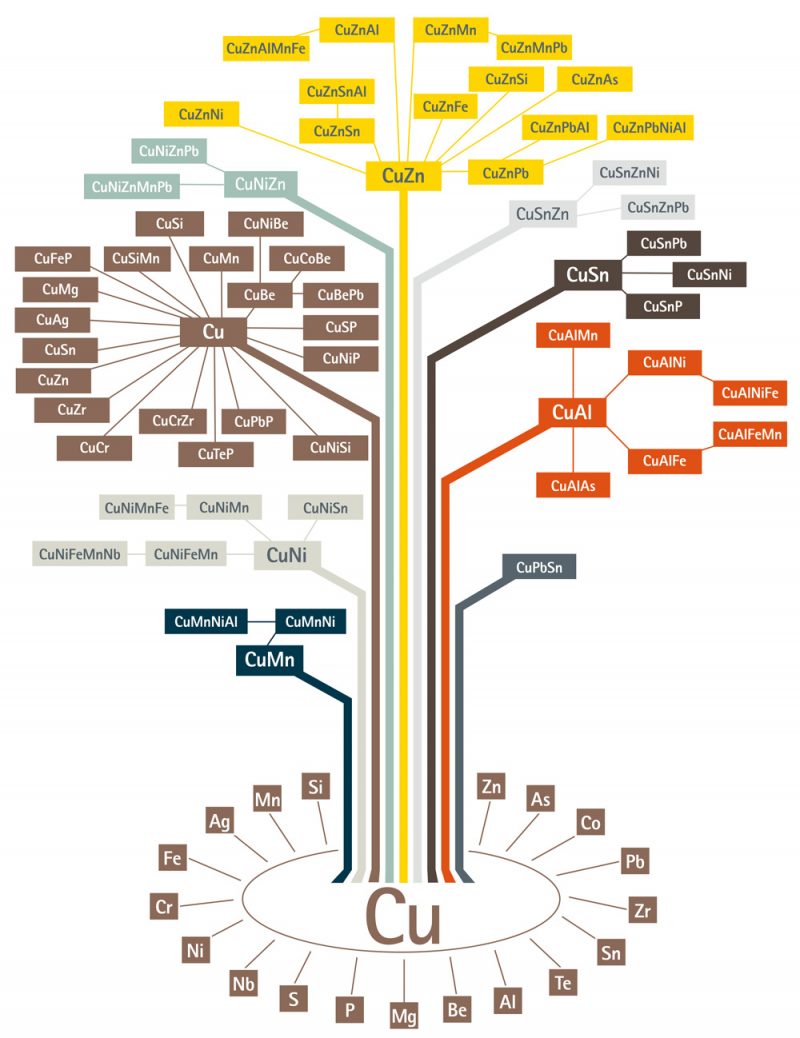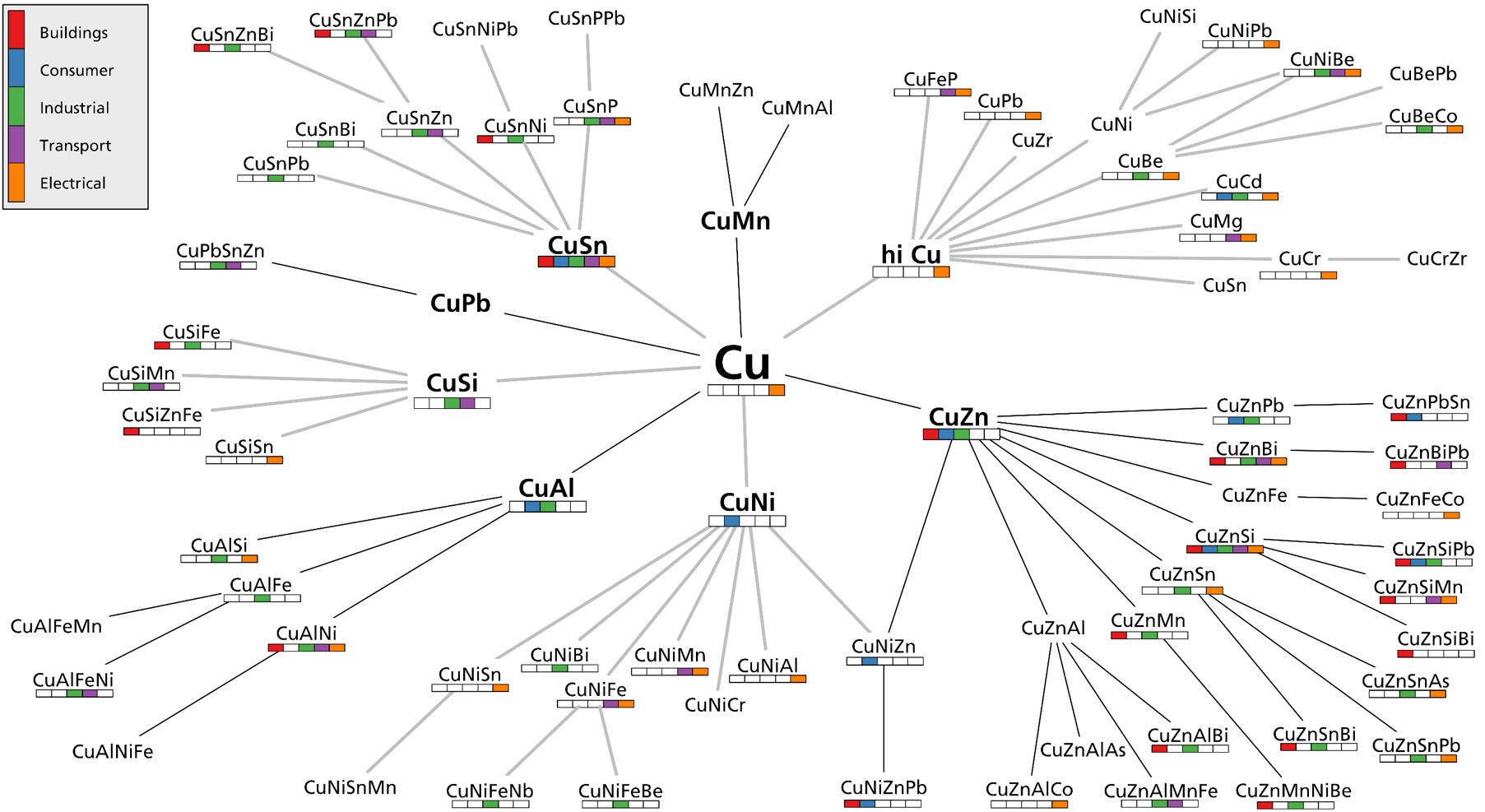
Copper Alloys
There are more than 400 copper alloys, each with very special properties, and the number is growing all the time. Copper alloys meet the highest technical demands and are tailor-made for a wide range of applications. When metals are mixed, new materials with new properties are created. They are called “alloys”.
Copper can be alloyed (mixed) with many different additives. Among the best-known copper alloys are the many types of brass, all of which contain varying amounts of zinc and produce a wide range of colours, with the typical gold-like shine, e.g. cast brass (used to be called “brass casting”) and bronze, an alloy of copper and tin. Most people are also familiar with gunmetal, an alloy of copper, tin and zinc, as well as nickel silver, consisting of copper, nickel and zinc.
The copper tree

Alloy properties
Alloying with other substances changes the properties of pure copper. For example, alloys of copper and nickel are extremely resistant to many types of corrosion and are therefore particularly suitable for use in the maritime sector, alloys of copper and aluminium are highly corrosion-resistant and high-strength, so that they are used for highly stressed bearing parts, in food processing machinery or for ship propellers. In the recent past, new copper-based alloys have been specifically developed, especially for electronics. They are summarised under the term low-alloyed copper materials.
Main applications of copper alloys
The specific properties that copper can achieve by combining with other elements result in a wide range of applications. Copper alloys are found in particular in buildings, in the end product and industrial sectors, as well as in transport and electrical applications.

Are you looking for a different content?